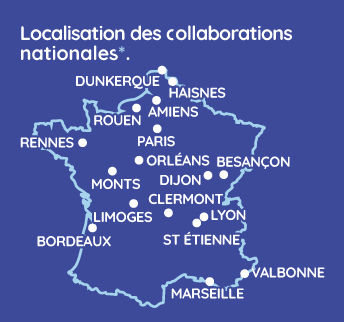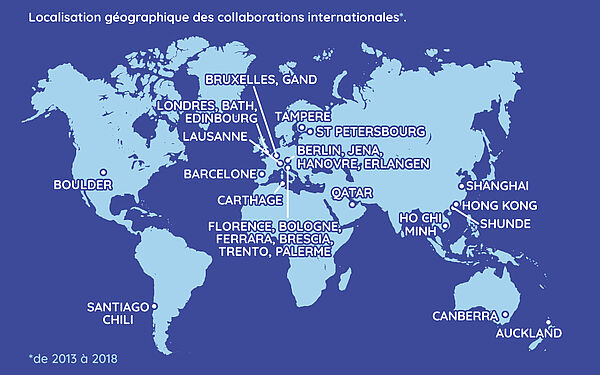Research
The research activities of the Photonics Research Group (Laboratory PhLAM/IRCICA) are structured around the technology centre devoted to the study and the achievement of Photonic Crystal Fibres (PCF). This platform, installed in January 2007 in the IRCICA building, gathers several original facilities dedicated to the fabrication of preforms by MCVD (Modified Chemical Vapour Deposition), OVD (Outside Vapour Deposition) and Sol-Gel processes, as well as tailor-made equipment for the drawing of PCF. Combined to the characterisation and modelling tools, these facilities make this technological platform a unique site in France and also of first rank in Europe. The researches focus on the development of new optical fibres aiming to master the optical properties of light or to achieve new light sources. These activities are organised into three main tightly linked research axes:
The craze for active glasses and fibers is still current and needs continue to be felt, both in terms of fiber geometry and that of materials. From this point of view, the research work of the “Active Fibers” axis relates to the development and optimization of synthetic routes to improve the performance of current glasses (level of doping, homogeneity, volume, etc.) as well as for develop innovative materials, either by the nature of the matrix itself, or by the dopant that we will seek to introduce.
Controlling doping and refractive index simultaneously, taking advantage of the luminescent properties of poorly known impurities, adapting the glass synthesis pathways to keep therein entities normally little compatible with the high temperatures characteristic of silica fiber drawing... these are examples of research themes of our group in the production of active fibers.
The Photonics group has acquired expertise in the field of microstructured fibers both in terms of manufacturing, thanks to the technological platform, and in terms of predicting their linear and non-linear properties through the development of original digital codes. We are actively involved in the development of many advanced microstructured fibers with original optical properties or for specific applications. Examples include flat mode fibers, hybrid fibers, multi-core fibers and fibers with a large effective area.
This theme was initiated within the group in 2008. After focusing on the generation of supercontinuum, research activities within this axis have gradually diversified and today concern generally parametric processes and solitons temporal, with a balance between fundamental studies and application aspects. One of the original features of the work is the use of so-called "topographic" fibers, whose guide properties vary in a controlled manner in the direction of light propagation.
Areas of application and collaborations:
Photonics is a high-tech field, which is therefore subject to a great deal of research, development and continuous innovation. In addition, the relationships between public research institutions and industry are strong, allowing innovation based on basic research. It is in this context that the research activities of the photonics group relate to applications in the telecommunications, sensors, new light sources and biology sectors. These actions are carried out as part of internal development or through national and international collaborations with academic partners (XLim Limoges, LVC Rennes, LPMC Nice, LPCML Lyon, CNR Trento…) and industrial partners (Prysmian Group, CEA-CESTA, Alcatel-Lucent, etc.)


